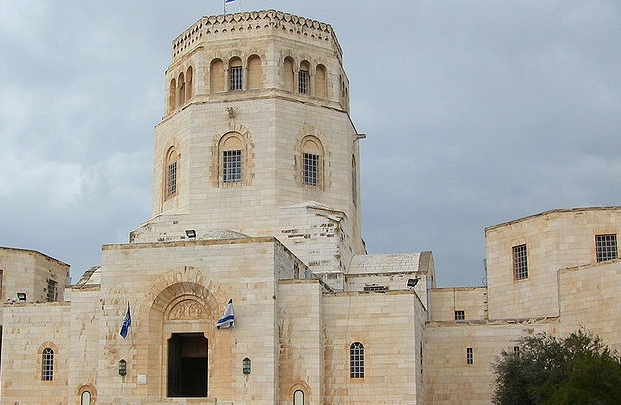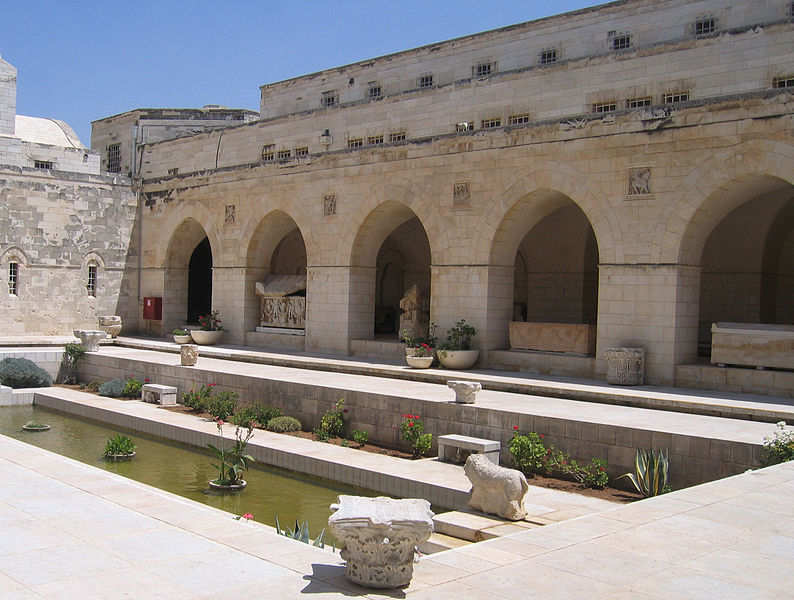The Rockefeller Museum
October 11th 2013
 A satellite branch of Jerusalem’s sprawling Israel Museum, the historic Rockefeller Archaeological Museum is extraordinary both for its collection of antiquities and for the building that houses them.
A satellite branch of Jerusalem’s sprawling Israel Museum, the historic Rockefeller Archaeological Museum is extraordinary both for its collection of antiquities and for the building that houses them.
The Rockefeller Museum’s building itself is a white limestone structure situated in eastern Jerusalem, just outside the Old City walls. The significance of the building site dates back to the late 17th century, when the property was owned by Sheikh Muhammad al-Halili, Mufti of Jerusalem. Al-Halili’s summer residence still stands, just to the west of the Rockefeller Museum. In the early 20th century, there were plans to develop the complex as a new campus for the Bezalel School of Art, but that plan was never realized. The British Mandate eventually opened the Rockefeller Archaeological Museum in the late 1930s.
 The architect, Austen St. Barbe Harrison, prepared himself for the design project by visiting museums throughout Europe and then by studying the architecture of the buildings found in Jerusalem’s Old City. His goal was to fuse East and West with the Rockefeller Archaeological Museum. Western elements of the building include exhibition halls that echo cathedrals, with their high windows letting in natural light, heavy doors made from walnut wood and imported metalwork. Medieval European architectural influences are evident in the museum library’s vaulted ceiling. Middle Eastern elements include the use of stone archways, interior courtyards, domes and Armenian tile work.
The architect, Austen St. Barbe Harrison, prepared himself for the design project by visiting museums throughout Europe and then by studying the architecture of the buildings found in Jerusalem’s Old City. His goal was to fuse East and West with the Rockefeller Archaeological Museum. Western elements of the building include exhibition halls that echo cathedrals, with their high windows letting in natural light, heavy doors made from walnut wood and imported metalwork. Medieval European architectural influences are evident in the museum library’s vaulted ceiling. Middle Eastern elements include the use of stone archways, interior courtyards, domes and Armenian tile work.
The museum’s permanent collection includes thousands of artifacts that were collected primarily during the period of the British Mandate (1919 to 1948), when some of the most important archaeological excavations of the early 20th century, such as Gezer, Jericho and Beit She’an, were undertaken. The artifacts, including coins, jewelry, mosaics, statues and sarcophagi are displayed chronologically and date from prehistoric times to the Ottoman period (1516 to 1917).
Don’t miss the Meeting Room in the southwestern corner of the museum. During the British Mandate, it was used by the Archaeological Advisory Board and is decorated with a quotation from Plato that boasts the first known use of the Greek word “archaeology.”
The Rockefeller Archaeological Museum, operating in more recent times under the auspices of the Israel Museum, is open during limited, irregular hours. The building is not heated, and it is recommended to dress warmly if you decide to tour the museum in the winter months.











